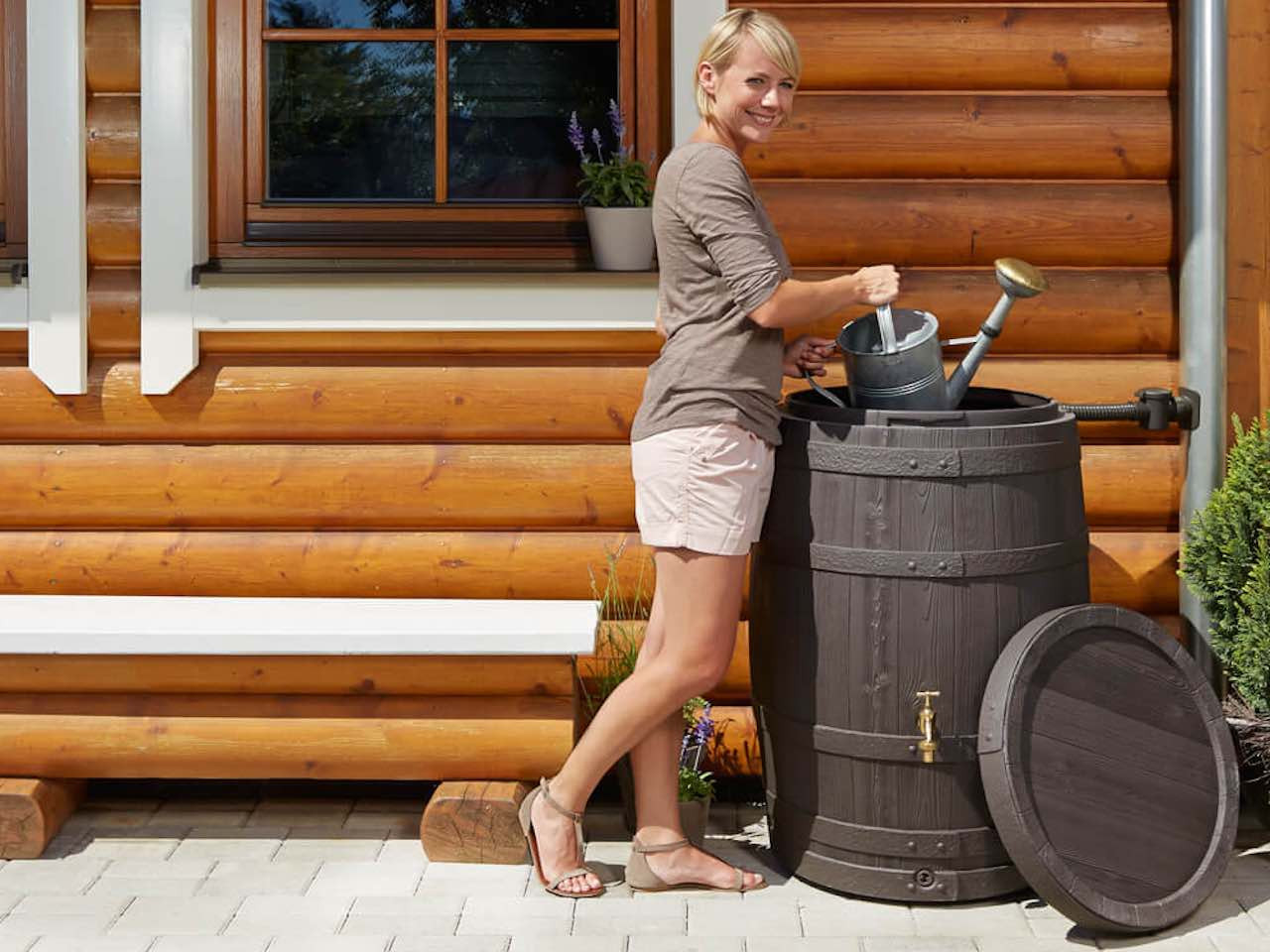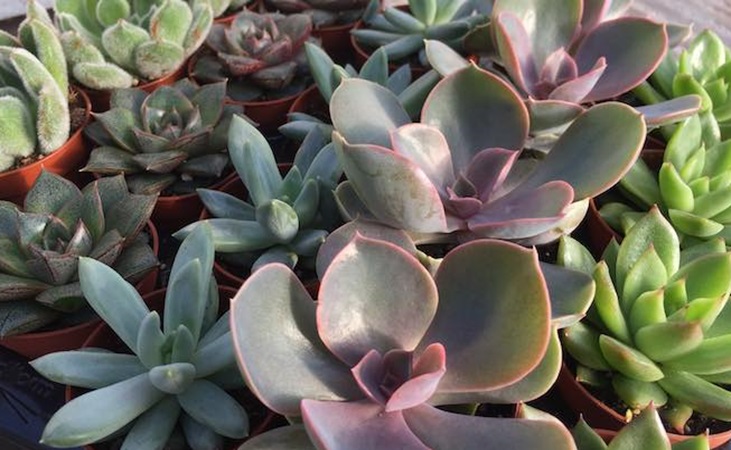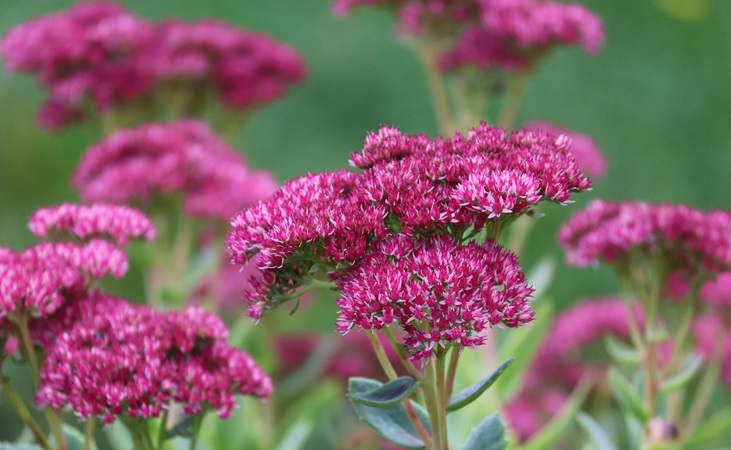Xeriscaping and Drought Tolerant Plants

It might sound like a phrase from some futuristic sci-fi story involving androids and off-world colonies, but xeriscaping actually comes from the Greek word ‘xeros’, meaning dry. It’s the practice of designing gardens or landscapes so that the need for irrigation is considerably reduced or even eliminated.
Xeriscaping has really caught on in dry desert climate states in the USA, where people long battled against nature to try and maintain traditional ‘manicured’ lawns against the odds - before presumably asking themselves: ‘hang on, what are we doing here?’

While in the UK we have a milder, more temperate climate, we can no longer take anything in the natural world for granted, can we? 2022 in the Uk saw lengthy drought conditions and hosepipe bans across the country. Meanwhile a year-long hosepipe ban in parts of Devon and Cornwall was finally lifted in September 2023.
The practice of xeriscaping - and how it has been applied in places where climate conditions present difficult challenges for gardeners - offers us some useful ideas, principles and pointers that we can keep in mind as extreme weather becomes more common.

A quick google of xeriscaping may initially shock and maybe even appall you: instead of brown soil or green lawns, you’ll be greeted with images that may look a bit more dry and sterile at first. Instead of neat rows of vegetables or raised beds, you are more likely to see a range of shrubbery of different sizes. But such is the nature of the kind of climate that has given rise to this style of gardening and landscaping.
Instead, one can focus on how healthy the foliage and plants look, thriving despite the absence of what we might regard as the necessary building blocks for healthy plant growth. From that we can take encouragement that no matter how dry and sweltering conditions get, there will always be a plant that can deal with it.

Gardening Tips for Dry Weather
Related ArticleOn this side of the world, we’re not at the point yet where we need to think about drastically overhauling our habitual garden layout. However, we are arguably reaching the point where we need to frequently take things like ‘drought tolerance’ into account when it comes to what we grow, especially if we want to be prepared for water shortages or even just want to take it easy on public water supplies.
It’s worth also keeping in mind that during times of pressure on the water supply, there can be knock-on effects on natural habitats.

What lessons and tips can we take from xeriscaping?
Irrigation
If you don’t want to eliminate supplemental irrigation completely, then it is important to use water as efficiently as possible. This means doing what you can to avoid evaporation, water runoff and of course overwatering.
Drip irrigation and soaker irrigation are efficient methods of delivering measured amounts of water directly to plant roots, as opposed to watering over the surface. The latter method can result in too much water being used or lost to evaporation, particularly in warmer conditions. Whatever your chosen system, make sure to check it regularly to make sure there are no leaks - you don’t want that either!

Drip Irrigation System - 16mm Parts Picker
View ProductA closely connected principle to keep in mind is timing. If watering is necessary during hot summer days, do so early in the morning or in the evening when the sun has reduced in intensity. This way plants have time to soak up moisture before it evaporates in the heat. Grouping plants together according to their needs is another method that can maximise efficiency or ration water usage.
Rainwater harvesting is another method of conserving water, as well as being prepared for shortages and hosepipe bans. This commonly involves connecting a water butt or tank to the downpipe from the roof of your house, but even a free-standing container can catch its fair share.

Barrica Rain Water Barrel
View ProductIf weather extremes are going to be more common in future, it makes sense to take advantage of spells of rainy weather, storing your own water supply for periods of drought. Depending on average annual levels of rainfall where you are, a surprising amount of water can be harvested this way.
Soil
In times of drought, a healthy and well-structured soil will hold on to precious moisture more effectively. In the long-term, adding good quality compost or broken-down manure to the soil will enhance soil structure and aeration, leading to a better water-holding capacity. As the soil retains water better, runoff is reduced and plant roots will have more to access. A good soil structure allows plant roots to grow and reach deeper to access water.

Bulk Bag Of Organic Compost - England & Wales Only
View ProductIn the shorter term, applying a layer of organic mulch - such as wood chips, bark, straw or seaweed - around the root zone can effectively retain moisture in the soil, reducing evaporation while also suppressing weeds. In a wider sense, popular gardening practices like 'no till' or no dig gardening are touted as being very good for water retention or infiltration.
Plant Choices
What Kinds of Plants Will Fare Better in Drought Conditions?
Plants that are resistant to drought tend to share certain characteristics, such as silvery grey foliage or thick, fuzzy leaves with fine hairs that trap moisture. Many drought-tolerant plants will benefit from a well-draining soil (for when it does eventually rain!).

Succulents
Succulent plants have the ability to store water within their leaves and stems; this is partly what contributes to their distinctive fleshy appearance. Succulents have adapted to all kinds of climates, including dry, arid, desert climates. This means they are well suited to drought-like conditions and are thus a great choice for when water conservation is a priority.
Succulents are generally very low-maintenance plants, but nonetheless add character to your garden with a wide range of colours and textures.

Achillea
Also known as common yarrow, achillea millefolium produces small, daisy-esque clusters of flowers. Depending on the type, the flowers have a range of colour including red, yellow and gold. A perennial wildflower, it has a blooming period that extends from early summer to late fall.
Even when it’s not in bloom, the feathery foliage can add visual appeal to whatever space it inhabits. It’s very drought-tolerant once established, with deep, extensive roots that reach to a depth of up to 20cm.

Yarrow works well as a border plant, in a wildflower meadow or in a ‘cottage garden’ style layout. It’s very good for attracting pollinators and beneficial insects, and also provides seed for birds. To drought resistance you can also add pest resistance, as the plant rarely suffers issues with pests or disease.
Rose Campion
Also known as Lychnis Coronaria, this striking short-lived perennial features deep magenta flower heads that are known to attract pollinators (a recurring theme, it seems). There are also white-flowered varieties. The slender stems - which can grow 60-90cm high - rise above distinctive silvery-grey foliage that’s covered in fine hairs, lending the plant a fuzzy appearance. Rose Campion should be deadheaded regularly to prolong the blooming period.

Verbena bonariensis
Verbena bonariensis is a herbaceous perennial, with slender stems that can reach a height of 6 feet topped by vibrant purple clusters. The nectar-rich flowers can attract a wide variety of insects including beneficial pollinators like hoverflies, solitary bees and butterflies. This is doubly important, as periods of drought can reduce the amount of nectar that is available for pollinators.
Verbena bonariensis has a deep root system that allows it to tap into water reserves in the lower soil layers. It’s also a renowned self-seeder. If you avoid pruning the plant in August, the seed heads will provide a food source for birds.
Sedum ‘Autumn Joy’
Autumn Joy, which also goes by the names Hylotelephium and Herbstfreude, is a valuable fall nectar source for pollinators; it’s especially popular with butterflies. Dark, dusky pink flower heads bloom in August and September, changing colour subtly as they mature. Sedums have the ability to store water in their thick stems and fleshy leaves, making for excellent drought tolerance. Dead flower heads can also provide an overwintering habitat.

Native Plants
There has been a move towards growing native plants in recent years. This has been particularly notable in the States, but people everywhere are becoming more conscious of the importance of native plants and perennials for our ecosystem and biodiversity.
Native plants are those that have adapted to the local environment, climate and weather conditions. In many cases they will need less watering or supplementary feeds, growing robustly without relying on our help.




